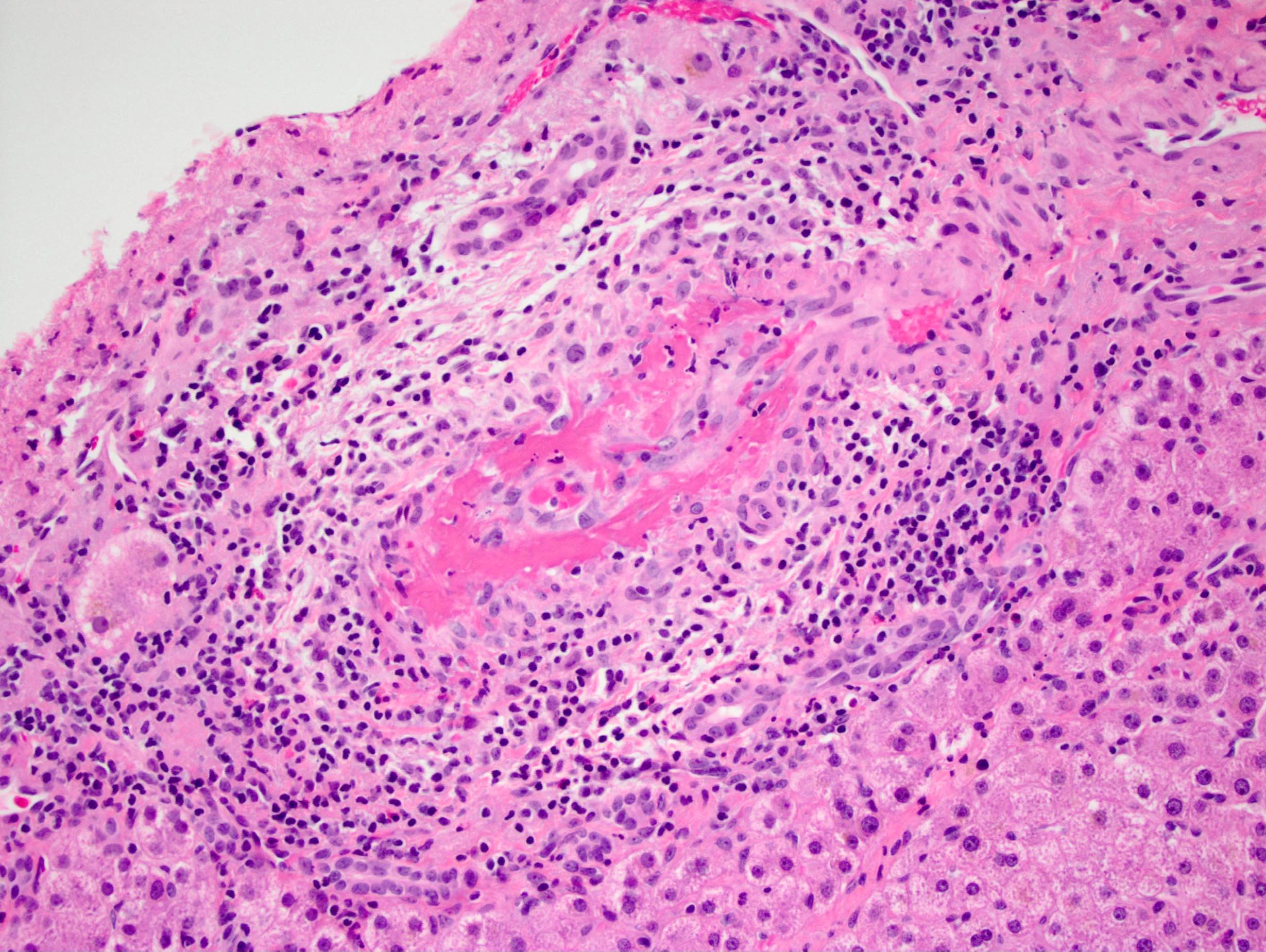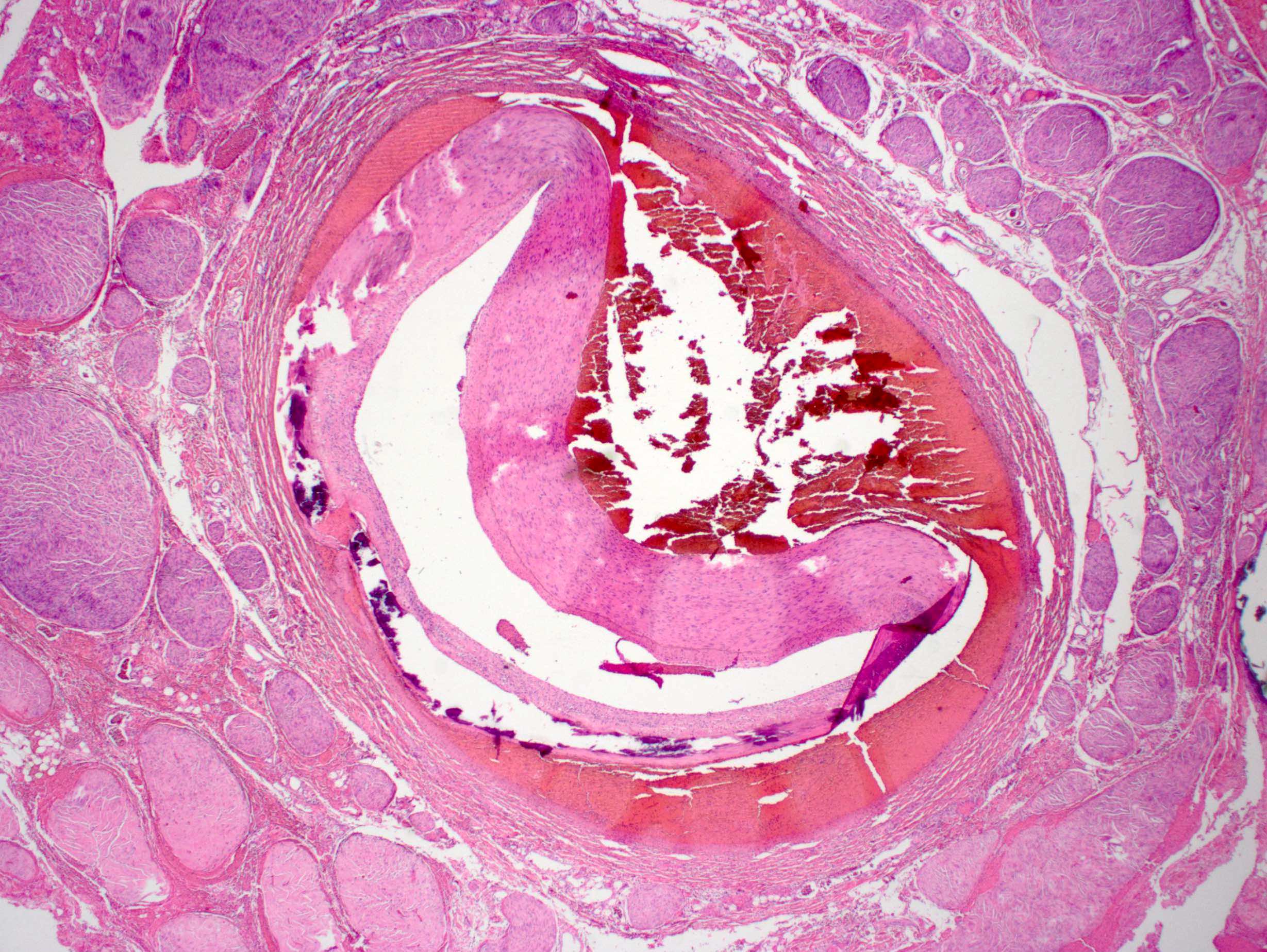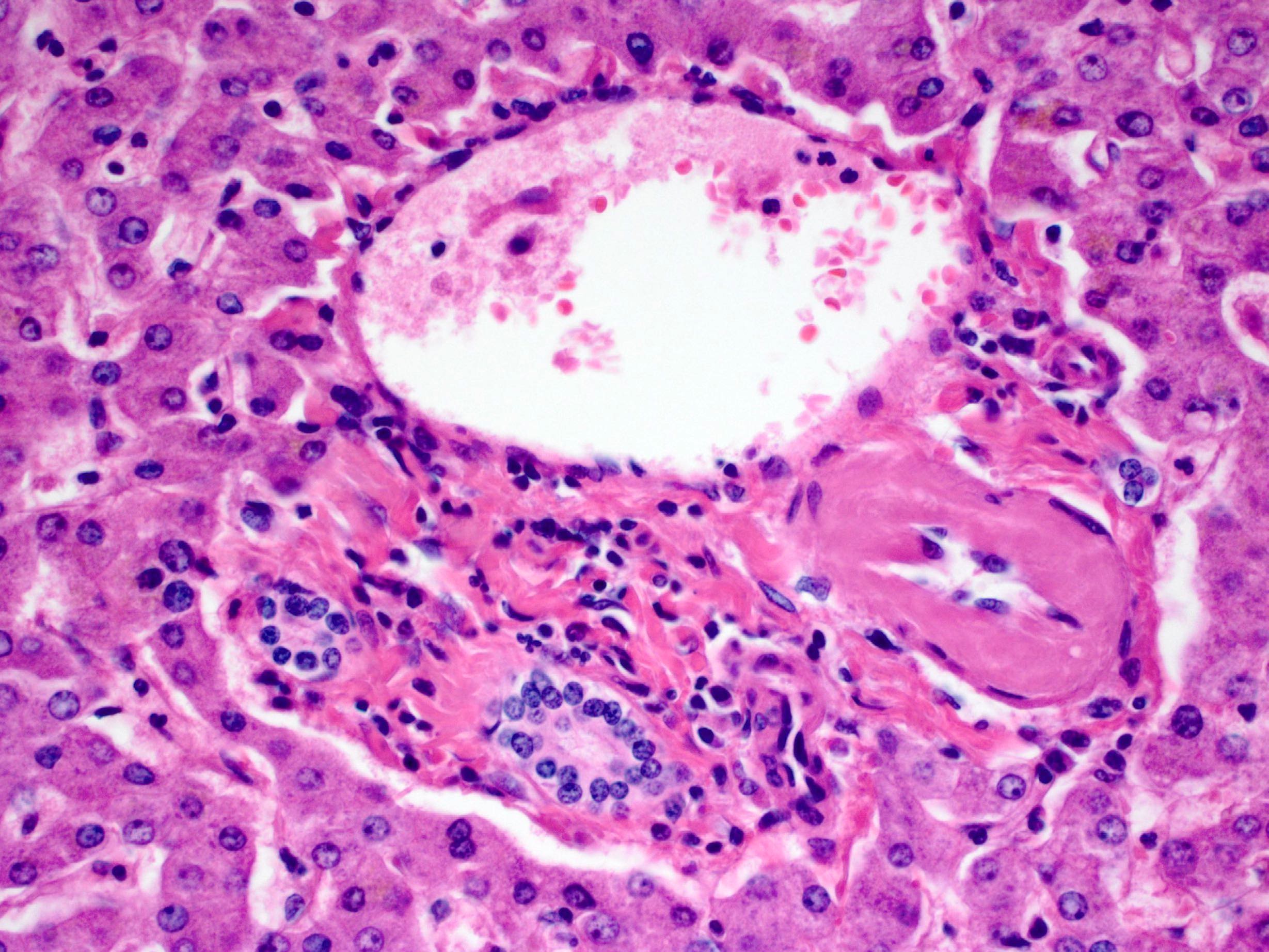Table of Contents
Definition / general | Essential features | Etiology | Clinical features | Microscopic (histologic) description | Microscopic (histologic) images | Sample pathology report | Board review style question #1 | Board review style answer #1Cite this page: Gonzalez RS. Arterial disorders. PathologyOutlines.com website. https://www.pathologyoutlines.com/topic/liverarteritis.html. Accessed April 1st, 2025.
Definition / general
- Pathologic insult to the hepatic artery or its intrahepatic branches
- Rare and often difficult to diagnose clinically
Essential features
- Most forms of arterial insult may impact the hepatic artery
- Depending on type of injury, patients may experience no symptoms, as portal vein compensatorily supplies more blood flow to liver
- Hepatic artery thrombosis is rare outside of the transplant setting
Etiology
- Many and varied
- Vasculitides that can affect the hepatic artery include polyarteritis nodosa, giant cell arteritis, Takayasu arteritis and granulomatosis with polyangiitis
Clinical features
- Patients with hepatic artery occlusion (due to thrombosis, neoplasia, vasculitis or trauma) present with severe abdominal pain, high transaminases, variable circulatory shock
- Arterial occlusion may cause infarction, although retrograde arterial flow through accessory vessels and portal supply may sustain liver parenchyma
- Some forms of hepatic arterial damage (atherosclerosis, cryoglobulinemia, amyloidosis) may occur without any clinical manifestations
Microscopic (histologic) description
- Ischemia causes centrilobular (zone 3) or localized (infarct type) coagulative necrosis
- Surviving parenchyma may show acidophil bodies or ballooning degeneration
- Compromise of arterial flow (e.g. hepatic artery thrombosis) can also lead to ischemic cholangiopathy, with necrosis of large bile ducts
- Diabetic patients may develop hyaline arteriolosclerosis (Am J Surg Pathol 2015;39:1000)
- Takayasu arteritis may be associated with hepatic sinusoidal dilatation (Ann Hepatol 2011;10:559)
- Transplanted livers may experience arterial flow abnormalities, causing increased mitoses, apoptosis and increased Ki67 index (Mod Pathol 2012;25:1594)
Microscopic (histologic) images
Sample pathology report
- Liver, allograft, orthotopic transplantation:
- Liver with hepatic artery thrombosis, diffuse zonal necrosis and focal ischemic cholangiopathy
- Margins of resection unremarkable.
Board review style question #1
Which of the following is most likely to cause necrosis of large intrahepatic bile ducts?
- Budd-Chiari syndrome
- Hepatic artery thrombosis
- Portal vein thrombosis
- Primary sclerosing cholangitis
- Viral hemorrhagic fever
Board review style answer #1








